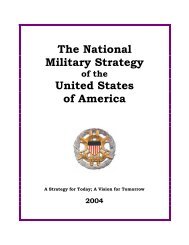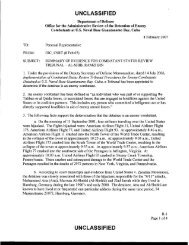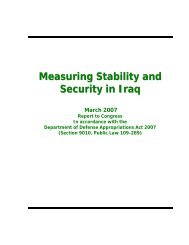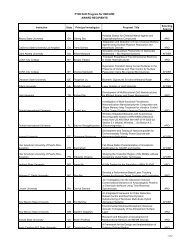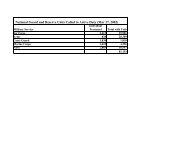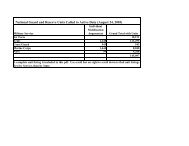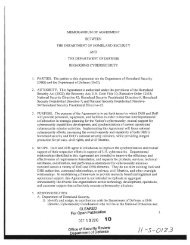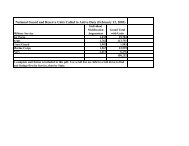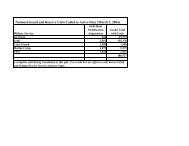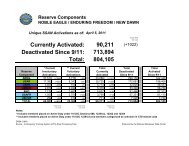Report - United States Department of Defense
Report - United States Department of Defense
Report - United States Department of Defense
You also want an ePaper? Increase the reach of your titles
YUMPU automatically turns print PDFs into web optimized ePapers that Google loves.
UNCLASSIFIED<br />
2.10: ANSF COUNTER-IED CAPABILITIES<br />
The leading cause <strong>of</strong> injury and fatalities for coalition personnel, ANSF, and Afghan civilians<br />
continues to be IEDs, with more than 2,500 civilian casualties caused by IEDs and more than<br />
4,100 ANSF casualties caused by IEDs in 2012. A significant gap remains in fielding the<br />
required number <strong>of</strong> Afghan C-IED units: as <strong>of</strong> February 2013, ANA had 59 validated Explosive<br />
Ordinance Device (EOD) teams out <strong>of</strong> an authorized 230 and ANP has 14 validated teams out <strong>of</strong><br />
an authorized 88.<br />
ANSF’s C-IED efforts continue to make steady progress, with fielded units in many ways<br />
exceeding the expectations <strong>of</strong> ISAF partners. However, IEDs are a major factor in the rise in<br />
ANSF casualties seen during the reporting period.<br />
All 24 Afghan National Army (ANA) RCCs are currently fielded and operating. While<br />
conducting daily route clearance missions, they can effectively find and clear with internal<br />
enablers such as validated EOD teams or explosive hazard reduction teams. Currently, 20 RCCs<br />
are operating independently with advisors, and three others are effective with partners.<br />
ANSF EOD and RCCs have been locating the majority <strong>of</strong> the IEDs for several months. These<br />
units are not reliant on high-end detection technologies. The ANSF “found and cleared” rates<br />
are comparable to, and <strong>of</strong>ten slightly better than, coalition rates. Not unexpectedly, Afghan<br />
personnel <strong>of</strong>ten use tips from the local population and local familiarity more effectively than<br />
coalition forces.<br />
Afghan C-IED units have in some cases demonstrated an impressive level <strong>of</strong> capability<br />
considering their lack <strong>of</strong> sophisticated equipment. However, Afghan units, partially as a result <strong>of</strong><br />
their lack <strong>of</strong> equipment, also face a higher level <strong>of</strong> risk in disposing <strong>of</strong> IEDs, and are not as<br />
effective as their ISAF counterparts.<br />
In urban areas, ANP <strong>of</strong>ten perform IED defeat (IEDD) operations to the same level <strong>of</strong><br />
pr<strong>of</strong>iciency as their ISAF counterparts; Afghan personnel understand and employ basic IEDD<br />
logic, skills, and low-technology tools and equipment to great effect.<br />
Only one national crime lab is operational; it is located in Kabul. With assistance from ISAF, the<br />
lab will receive an interim upgrade prior to being relocated to a new facility in mid-2014. The<br />
second national lab in Herat is in the contracting phase and progressing towards Full Operating<br />
Capability (FOC) by mid-2014.<br />
Significant challenges still exist for generating fully manned, trained, and equipped C-IED<br />
teams. ANSF face a range <strong>of</strong> challenges, specifically in the areas <strong>of</strong> training through-put and<br />
EOD retention. The GIRoA logistics chain also regularly fails to provide proper electronic<br />
counter-measures (ECM), and coalition-funded equipment <strong>of</strong>ten remains in local depots or unit<br />
supply rooms, forcing ANP (and ANA) C-IED teams to assume exceptional risk to remove or<br />
mitigate IEDs. ANSF reporting <strong>of</strong> report IED events is very inconsistent.<br />
102



